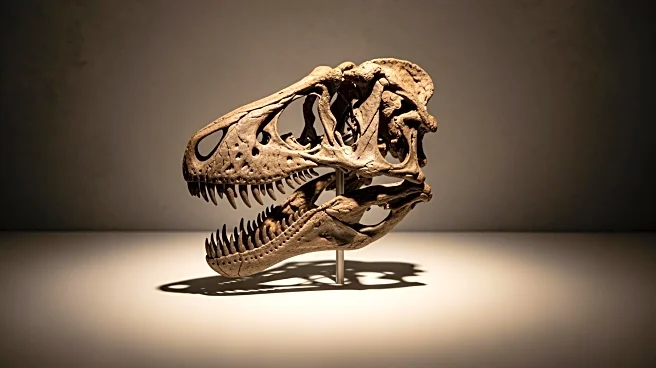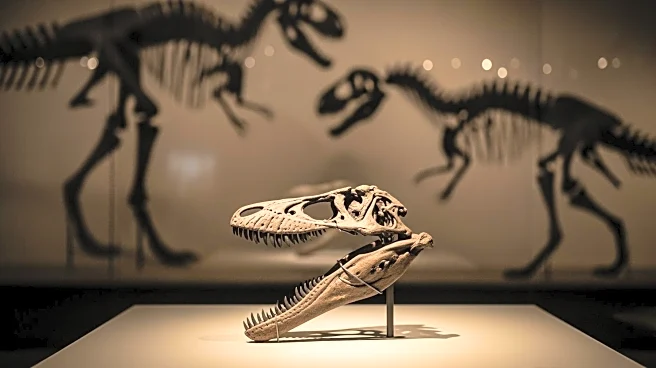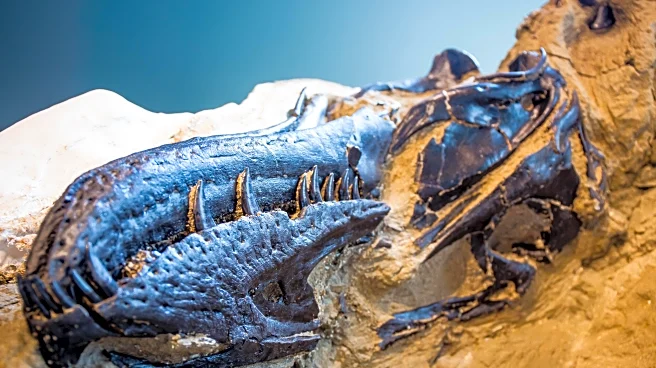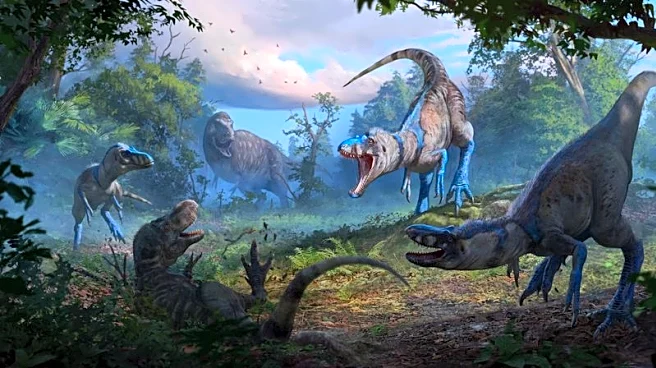What's Happening?
A recent study has provided strong evidence that the dinosaur known as Nanotyrannus is a distinct species from the Tyrannosaurus rex, settling a long-standing debate in paleontology. Researchers analyzed
a fossil from Montana's Hell Creek Formation, part of the 'Duelling Dinosaurs' specimen, and found that the small tyrannosaur was not a juvenile T. rex but a mature adult of the species Nanotyrannus lancensis. The study also identified another species, Nanotyrannus lethaeus, based on anatomical differences. This discovery challenges previous assumptions about T. rex development and suggests that multiple tyrannosaur species coexisted in the same ecosystems.
Why It's Important?
The confirmation of Nanotyrannus as a distinct species has significant implications for our understanding of dinosaur evolution and ecology. It suggests that the late Cretaceous period was more diverse than previously thought, with multiple tyrannosaur species occupying different ecological niches. This could lead to a reevaluation of how these predators interacted with their environment and prey. The findings also impact the study of T. rex, as previous research based on juvenile specimens may need to be revised. This discovery enriches the narrative of dinosaur biodiversity and highlights the complexity of prehistoric ecosystems.
What's Next?
Researchers will likely continue to study the newly identified species to understand their behavior, diet, and ecological roles. Further analysis of existing fossils and new discoveries could provide more insights into the diversity of tyrannosaurs and their evolutionary history. The study may also prompt paleontologists to reexamine other dinosaur specimens to identify potential misclassifications. As the debate over Nanotyrannus settles, the focus may shift to exploring the broader implications for dinosaur taxonomy and the dynamics of ancient ecosystems.
Beyond the Headlines
The discovery of Nanotyrannus as a distinct species raises questions about the accuracy of historical paleontological classifications and the potential for other misidentified species. It highlights the importance of continuous research and technological advancements in fossil analysis. The study also underscores the role of collaboration between institutions and the value of revisiting previous assumptions with new evidence. Culturally, the findings may influence public interest in dinosaurs and inspire educational content that reflects the updated understanding of these prehistoric creatures.















